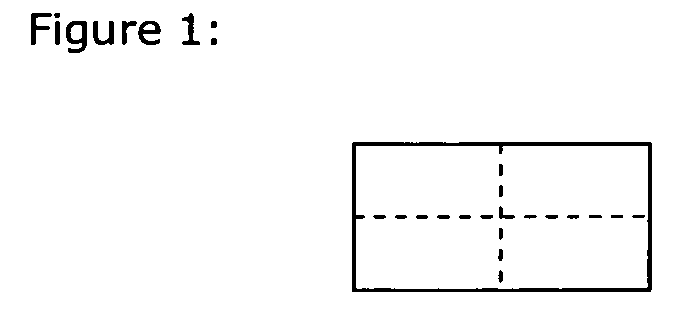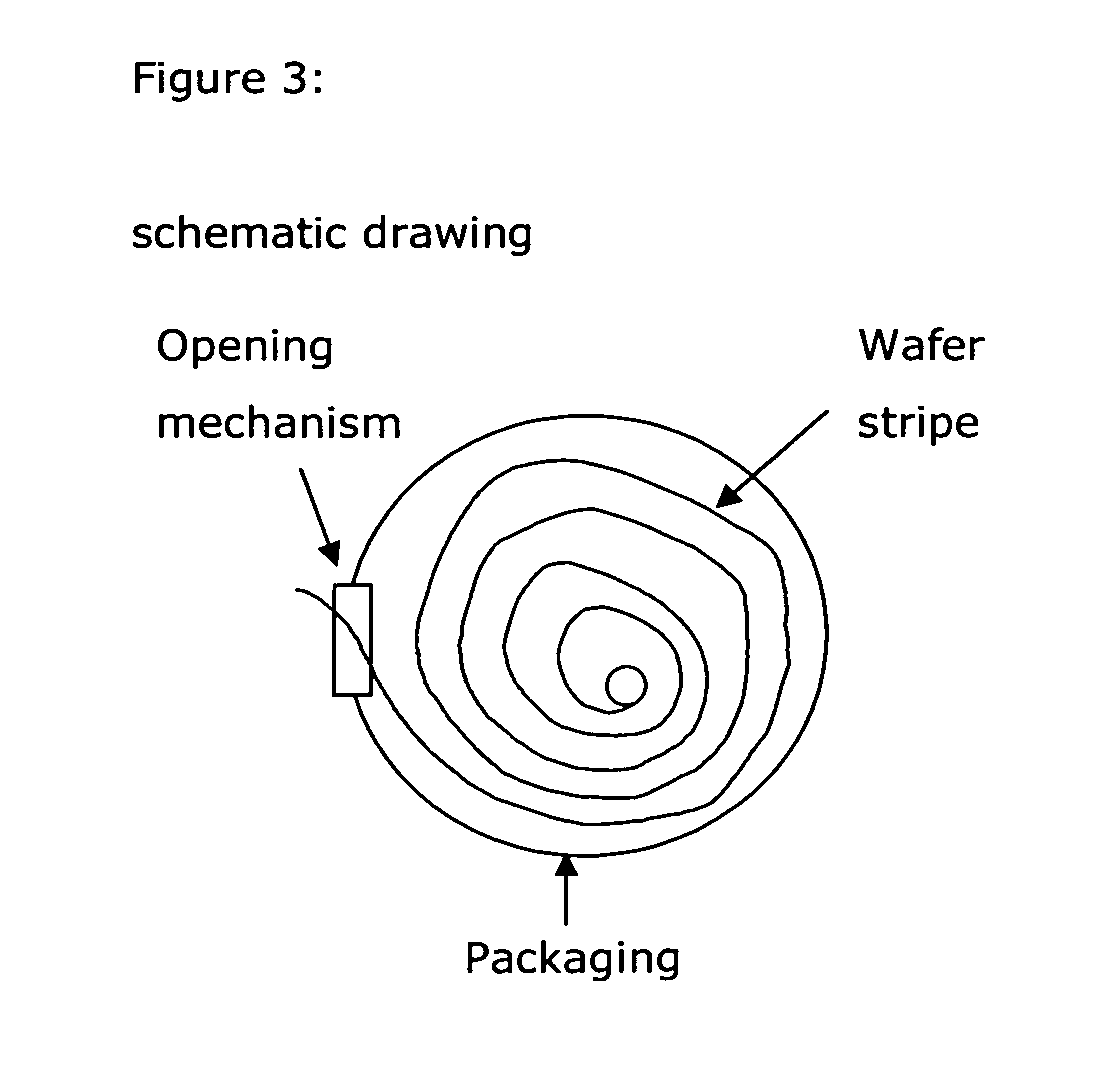Drug delivery systems (WAFER) for pediatric use
a delivery system and drug technology, applied in the field of drug delivery compositions, can solve the problems that pediatricians and physicians willing to treat children's diseases cannot rely on the market authorization of drug products granted by health authorities, and the general application rule is not generally applicable, so as to improve compliance
- Summary
- Abstract
- Description
- Claims
- Application Information
AI Technical Summary
Benefits of technology
Problems solved by technology
Method used
Image
Examples
example 1
Preparation of Particles Comprising a Protective Agent
example 1a
Eudragit
[0183]1 gram of Nifedipine is dissolved in 50 ml of Acetone. 19 g Eudragit E 100 is added to this solution and subsequently dissolved with stirring of the solution. A table stirrer at mean velocity and elevated temperature (35° C.) is used. The 50 ml solution is then casted into Teflon-coated aluminium foil formed into a cup-like shape. The solution in the cup is put into a laminar flow box for 48 h at room temperature to remove the solvent. A clear crystal free, solid block consisting of 95% Eudragit E100 and 5% Nifedipin [w / w] is obtained. The block is broken into pieces of an area of about 1-3 cm2. These pieces are milled in an air mill LSM 50 stainless steel with the following parameters adjusted; injector nozzle d=1.1 mm; diffuser d=3.8 to 5.7 mm; milling nozzle d=0.7 mm; outlet 9.7 mm, at 5 bar air pressure and a feed of 2.15 g / min. The milling is done two times. The obtained particles have a diameter d50 of 11 μm, determined with a Helos (H0710) and Rodos with standar...
example 1b
radiol / Carnauba Wax (As Illustrative Example)
[0185]80 g of carnauba wax (Pharm. Grade) was dissolved in 1 kg of n-heptane at 60° C. in a 2 litre double-walled glass beaker while stirred at 400 rpm until a clear solution was obtained.
[0186]80 g of micronized (d50=1.5 μm; d90=4.0 μm) ethinylestradiol was added slowly to the solution to avoid clumping while the stirring rate was adjusted to 600 rpm. The mixture was cooled to 20° C. at a cooling rate of 20° C. / hour to yield the drug containing microparticles coated with Carnauba wax.
[0187]The ethinylestradiol-containing microparticles were filtrated using a cellulose acetate filter membrane and a glass filter unit. The microparticles were subsequently washed with 300 ml ethanol (96%) to remove n-heptane residues and non-encapsulated ethinylestradiol.
[0188]The filtered microparticles were transferred to a glass bowl and dried for 2 hours at 30° C.
[0189]The resulting particles had the following particle size distribution:
d50 (μm)d70 (μm)d...
PUM
| Property | Measurement | Unit |
|---|---|---|
| Temperature | aaaaa | aaaaa |
| Length | aaaaa | aaaaa |
| Fraction | aaaaa | aaaaa |
Abstract
Description
Claims
Application Information
 Login to View More
Login to View More - R&D
- Intellectual Property
- Life Sciences
- Materials
- Tech Scout
- Unparalleled Data Quality
- Higher Quality Content
- 60% Fewer Hallucinations
Browse by: Latest US Patents, China's latest patents, Technical Efficacy Thesaurus, Application Domain, Technology Topic, Popular Technical Reports.
© 2025 PatSnap. All rights reserved.Legal|Privacy policy|Modern Slavery Act Transparency Statement|Sitemap|About US| Contact US: help@patsnap.com



